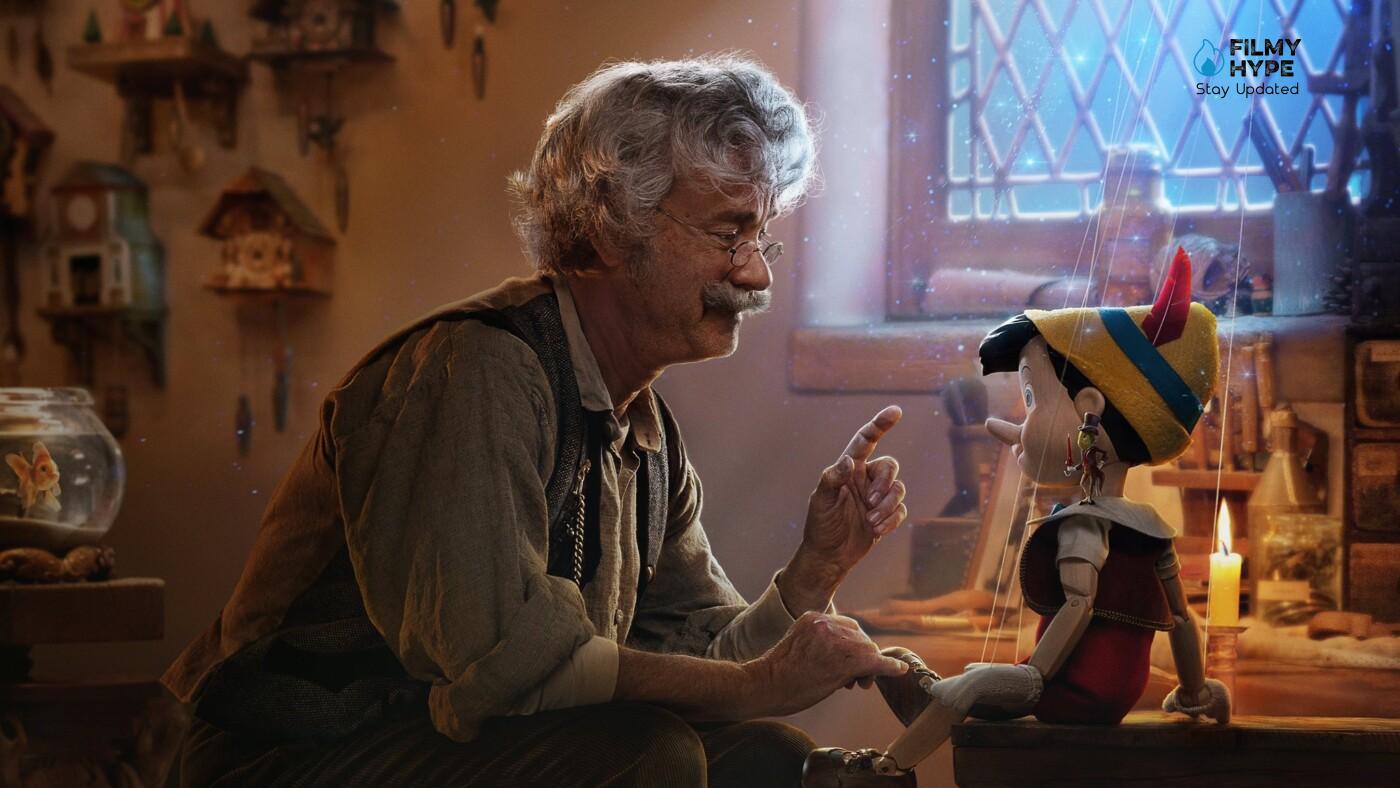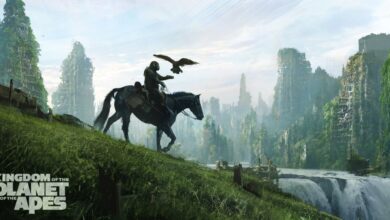Pinocchio: The Differences Between Guillermo del Toro’s Pinocchio and Disney’s Pinocchio
For years, Disney has built and redefined classic stories that have marked the history of humanity Pinocchio is one of them. During those same years, and at the height of animation, we have grown up seeing and reliving the same story sweetened under the standards of what Mickey Mouse’s company dictates and governs values, judgments, and even the intrinsic moral lessons in the own original stories. All these stories, from Cinderella to The Little Mermaid, from Aladdin to Peter Pan, are not, no matter how much we love them, and they have marked our lives and our childhood, the product of the Walt Disney Company. An example that we see perfectly with Guillermo del Toro’s Pinocchio, a refreshing and emotional new vision, of what the Mexican director sees in Carlo Collodi’s original 1881 story.

Pinocchio: The Differences Between Guillermo Del Toro’s Pinocchio and Disney’s Pinocchio
The truth is that, to this day, there are countless film adaptations about the life of the doll that became a real child. Since 1881 we have relived the story repeatedly, with different contexts, different characters (generally secondary) and different motives, to give that kind of lesson on what is good and evil and how to approach it for the little ones who are in search of such learning. However, this new version created from the unique vision of the Mexican director leaves us a series of elements to consider and point out about the importance of the story, one that moves away from what we have frequently seen on screen about Pinocchio, and far removed from the Disney concept, even before its live-action remake in this 2022. And here, we break down the messages that switch Guillermo del Toro’s Pinocchio with Walt Disney’s.
A Fable About Disobedience
We are well aware that, from its origins as a children’s story, the 1940 version takes up the analogy of good and evil. Pinocchio, being a boy completely oblivious to the dangers within him, plunges headlong and has to navigate them in search of his goal. As the fairy who gives him life explains, if he wants to be a real child, he must behave like a good child. He must ‘earn’ that ‘privilege’. So, we find an innocent boy, leaving the teaching of being cautious, not trusting strangers and the temptations of the dangerous world we live in.

Guillermo del Toro‘s version opts for a different path. Taking the main idea of Carlo Collodi’s story, the Mexican director transfers the idea of obedience to disobedience. Set against a backdrop of a fascist age, where obviously obedience is a great virtue, Pinocchio’s (Gregory Mann) disobedience feels fresh and rejuvenating. How this path of Pinocchio is embodied in the world not by earning a living, by behaving well, but rather, as his creator describes it, by learning to be human. Attaching himself to his ‘defects’ and himself, giving a twist to the story that happens from what Pinocchio learns from the world and therefore, in a good child; to one where he learns who he is and what it’s like to be a human being.
The Perfection of The Imperfect
Pinocchio is an imperfect being and his path in history is to achieve it, to achieve the perfection of the good boy, with his conscience, Jiminy Cricket, who will guide him on that path of good and evil. However, the characters around him fall into perfection, the perfection of his conscience in Jiminy Cricket, the perfection of the father’s authority in Geppetto, or the perfection of divinity, in the fairy.
For this, the Netflix movie has a peculiar twist and is much closer to reality (hence, more relatable, although it is still an animated film). Starting with Geppetto (David Bradley), we have a character immersed in rancor and sadness after the loss of his son Carlo (Gregory Mann), ‘the perfect son’. Drunk, glib and in agony; as del Toro himself describes it, Geppetto is the representation of a father’s pain after the loss of his son, one with errors and not simply the desire of a man to have a son and companion, like the Disney version. The same imperfection is reflected even in the carving of the puppet itself, an incomplete puppet.
On the other hand, Del Toro poses Sebastián J. Grillo (Sebastian J. Cricket in its English version and the voice of Ewan McGregor) as a character with flaws. Outside of being ‘the perfect conscience’, the Netflix version is closer to an egocentric and self-confident character due to his great knowledge and journey. Remembering, in the Mexican director’s own words, like Pinocchio, with his imperfections, with his disobedience, as a virtue, he manages to change everyone without changing himself.
The Characters and Their Villains
The 1940s version gave us memorable moments and characters. From Figaro and Cleo, with their iconic songs, to Stromboli and Moth, with details that deeply marked our childhood (this is when we all traveled back in time and remembered Moth’s transformation into a donkey). However, this new vision of the Italian classic made several changes to better capture the idea of the Mexican. Leaving out the four mentioned characters to integrate Count Volpe (Christoph Waltz), a version similar to Zorro, but who becomes the true villain of the film. Being him who deceives Pinocchio, along with Spazzatura (Cate Blanchet), and unites him with the caravan, unlike the classic film where Stromboli is the one who pulls the strings in the circus.
In the same way, Guillermo Del Toro integrates the idea of Carlo (Gregory Mann), the son that Geppetto loses due to the war, thus beginning the integration of an idea that the director refers to as ‘the reincarnation of a perfect son’. in an imperfect son‘. And, rectifying the presence of National Socialism in Mussolini’s Italy and obedience/disobedience (the main theme in the film), the characters Podesta (Ron Perlman) and Candlewick (Finn Wolfhard) act as that tense and so tense father-son relationship. The complex search for perfection in the imperfections of children. As well as the contribution of the sense of faith, which moves the whole story and the rejection of Pinocchio, in the role of the Father (Burn Gorman).
In this thread of messages and symbolism that Del Toro built with Pinocchio, we move on to one of the themes from which this film derives. Where the dual character between the Spirit of the Forest (Tilda Swinton), who replaces to a certain extent the Blue Fairy, as the source of life, and Death (Tilda Swinton) as that character, sister of the spirit, which gives her teaching Pinocchio about the value of life and with it, the importance of death (for this point we will delve further later).
The Background of a Fascist Era
In a film that gives a 180° turn to what the version of the 40s tries to propose, including the novel itself, Del Toro’s success in staging the film at a time when obedience was the best virtue in society (for leaders, obviously) is understood as essential when envisioning its final message. Where, the filmmaker’s idea of disobedience is reflected and endorsed as a virtue in the face of what is ‘bad’, that obedience is not necessarily ‘good’ as the original film proposes and that we can see when Pinocchio talks to Geppetto about war, with Candlewick on cowardice or fear. And even the very use of lies in a society that speaks of a parallel between lies and evil.
Life and Death
Guillermo del Toro’s Pinocchio is a great metaphor for life and death (plus an ode to life). And this is probably the furthest approach from the Disney version. Speaking from reality, the tape raises a character who does not die; explained by the character of Death (Tilda Swinton), who has no soul cannot die. And hence the fact of her constant resurrecting throughout the film.
It is true, in the animated version of the forties, Pinocchio dies, and it is the Fairy who, being good, gives him a second chance and turns him into a real boy. Death, like a good 17th-century tale, is something constant and present. Unlike its previous adaptation, however, this new version gives a more present teaching of life, teaching Pinocchio the value of life through death. Pinocchio, happy to be immortal, material and constantly reviving, learns from Death that the value of life is the moment in which we live. It’s not just about being good and getting rewarded, in the end, Pinocchio sacrifices his immortality to save Geppetto, he sacrifices himself regardless of his fate.
This journey, one that Del Toro exemplifies as the journey of life in a supposedly inanimate object gives the lesson of what life is; seeing how the years are present in Geppetto, in Grillo and even in Spazzatura. Understanding Pinocchio is a fact as simple and as complex as the relationship between life and death.
The Possibility of Loving Without Transforming
(Let’s repeat a sentence from the previous point). Pinocchio sacrifices his immortality to save Geppetto. Pinocchio, realizing the danger of life, has a chance to be a real boy. He doesn’t change, he doesn’t age, he doesn’t become flesh and blood as in the Disney adaptation and in the Italian tale itself, he changes inside. And there lies the concept of Guillermo del Toro’s film, let’s say ‘the heart of the film’. Pinocchio, being so imperfect, does not change in obedience, he does not transform before Death, but the force in his actions transforms everyone around him. Geppetto leaves his grudge, Grillo his pride (he makes a final wish to save Pinocchio instead of something personal) and Spazzatura defends him from Count Volpe.
The possibility of loving without transforming (a phrase taken from the director’s own words) is what Pinocchio is all about. To love what is imperfect and lacking, to accept it, not to mold it into obedience, not to mold it like wood, but to transform it into acceptance. And, in del Toro’s own words, that’s the main difference from his version: ‘Pinocchio is usually about what Pinocchio learns in the world and becomes a good boy, and therefore a real boy. Our Pinocchio is not that, he changes everyone, because he is so pure. He changes Geppetto, he changes Grillo, he changes Spazzatura; he changes everyone. (And because of that) he learns who he is as a human being.






